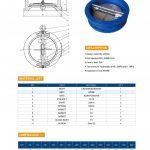HuaZe Valves and Pumps are the valves factory and pumps manufacture that integrated in foundry, CNC machining, Epoxy painting line, Pressure testing and pumps design…etc.
At their most basic, valves are devices that work to control, regulate or direct flow within a system or process.
They often feature a range of characteristics that help to define their ideal application.
However, whether you’re looking to control flow, provide safety in a system that is piping liquids, solids, gasses or anything in between, there are likely stainless steel valves available to help.
Valves provide several functions, including:
- Starting or stopping flow based on the valve state
- Regulating flow and pressure within a piping system
- Controlling the direction of flow within a piping system
- Throttling flow rates within a piping system
- Improving safety through relieving pressure or vacuum in a piping system
VALVE OPENING METHODS EXPLAINED
While many valves accomplish similar goals, how they do so mechanically can vary.
How a valve opens and closes will not only impact the overall performance but also determine how much control you have over the flow and how quickly the valve can operate.
Most valves fit into one of three categories:
- Multi-Turn valves: Think of these valves like a screw or piston. You crank the handle and the plug, plate, membrane, or other controlling obstruction moves into the path of the pipe blocking access. Depending on the valve, these can have higher or lower differentials allowing you to open or close them at various speeds.
- Quarter turn valves: Quarter-turn valves offer a full range of motion in a 90-degree turn of the handle. This makes them ideal for situations where precision isn’t as important as rapid action and easy opening or closing.
On top of the mechanical motion involved with a valve, also consider the method of actuation. In most cases, valves fall into one of three categories:
- Manual Valves: Typically adjusted by hand, these valves use handwheels, hand levels, gear wheels, or chains to actuate.
- Actuated Valves: Often connected to electric motors, air or pneumatic systems, hydraulic systems, or solenoids, these valves allow remote control and automation for high-precision or large-scale applications.
- Automatic Valves: Some valves activate when a specific flow condition is met. Examples include check valves closing during backflow or pressure release valves activating when an over-pressure condition is detected.
COMMON VALVE TYPES AND THEIR APPLICATIONS
Valves feature a range of characteristics, standards, and groupings the help to give you an idea of their intended applications and expected performance. Valve designs are one of the most basic ways to sort the huge range of valves available and finding a good fit for a project or process.









One Reply on “What are the Valves?”
Thank you, I have recently been looking for info approximately this topic for a while and yours is the best I have discovered so far. However, what about the conclusion? Are you sure about the supply?